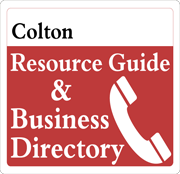Do you know the feeling? That dreaded first step out of bed when you have been comfortably asleep all night or relaxing in a lounge chair. That step that sends a sharp lancing pain through your foot and heel. It is so intense that you start to limp and just “deal with it” because you know the routine, it's only this intense for a little while, then it goes away… like magic.
Well, friends, it's not magic. It is a signal from your connective tissue in your foot that there is too much pressure on nerves and vascular structures, especially when you put bodyweight on it and compress it for too long.
Do you have 1 of these foot problems?
- Foot pain that is sharp and usually on one foot?
- Pain that is worse with those first few steps out of bed in the morning
- Pain at first but somehow it gets better the more you walk on it or “warm it up.”
If you answered yes to any one of these problems, you most likely have plantar fascial dysfunction.
Plantar fascial dysfunction is the most common type of plantar fascia dis-ease and is the most common reason for heel pain, responsible for 80% of cases.
The condition tends to occur more often in women than men.
Plantar fascial dysfunction is estimated to affect 1 in 10 people at some point during their lifetime and most commonly affects people between 40–60 years of age.
There could be a variety of different reason why you are needlessly suffering from this connective tissue disease:
- Maybe you started running (concrete and asphalt running is the worse).
- Maybe you stand on a hard surface for prolonged periods of time.
- Maybe you have genetically high arches.
- Maybe you have a leg length inequality.
- Maybe you have flat feet.
- Maybe you are chronically tight in your Achilles tendon.
- Or maybe no one has ever shown you the correct way to lengthen out these tissue restrictions that will give long lasting results instead of a short-term benefit.
Whatever the case is I have treated thousands of feet over my last 15 years of clinical practice and feet are so freakishly strong and resilient that it is amazing the abuse we put our feet through. However, when something goes wrong with them, our whole life changes. It is alarming how the majority of people will “deal with pain” for a long time. In fact, if you ask yourself how long you have been dealing with foot pain, you probably have lost count of the time you have been “dealing with it.”
The “dealing with it” is all fine and dandy until what we enjoy doing for fun (i.e. limited social encounters, pain, stress, anxiety, limited mobility and loss of balance) starts to limit our quality of life.
Some plantar and heel pain patients described that they have a significant amount of fear of standing or walking for prolonged periods of time due to the pain that will show up and “bite them.”
Maybe you have tried the following interventions:
- Rest
- Ice
- Elevation
- Acupuncture
- Dry Needling
- Ultrasound
- Iontophoresis
- Foot Inserts
- Massage
- Oils
- Tapes
Have any of these interventions worked for you? Have they worked long-term?
If they have NOT, I invite you to be open to what research and evidence are showing to have far more success long-term for foot pain.
Myofascial Release is an intervention that is dedicated to treat the body and provide structural - fascial mobility to assist the body to return to a balanced state of being.
Dysfunction in normal tissue leads to disease, not just a connective tissue balance, but in fluid dynamics, nerve processing, and sensory balance.
If you think you or someone you know is in a position to experience a Revolutionary Manual intervention, that is authentic, non-traumatizing, effective, and progressive, then I encourage you to call us at:
909-796-0012 or visit our website at www.rendonpt.org
Schedule a complimentary consult with the only Physical Therapist in the Inland Empire who provides this certified and highly skilled intervention, Dr. Abel Rendon, DPT, DSc, PT. Call today, ask for Bianca (our customer service specialist), and request 1 of our 4 Complimentary consultations available this week.
Physical Therapy is good, but Physical Therapy with Myofascial Release is BEST.
For more local news and information click here.

